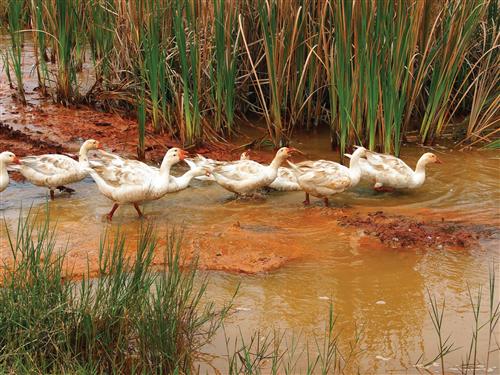The concentration of total dissolved solids (TDS) is a measure of the amount of dissolved material in water. TDS includes solutes such as sodium, calcium, magnesium, bicarbonate, chloride and others that remain as a solid residue after evaporation of water from the sample. Fresh water usually has TDS levels between 0 and 1 000 mg/L, depending on the geology of the region, climate and weathering, and other geographical features that affect sources of dissolved material and its transport to a water system.
Conductivity is a measure of the ability to conduct an electric current and is the opposite of resistance. The higher the concentration of ions in water, the more current it can conduct. Conductivity is therefore sensitive to the amount of dissolved solids—particularly mineral salts—in the water, and also depends on the amount of electrical charge on each ion, ion mobility, and temperature. There is a well defined relationship between TDS and conductivity for water collected from a specific region.
Expressed in units of microsiemens per centimetre (µS/cm), conductivity generally ranges between 10 and 1 000 µS/cm in most rivers or lakes that have outflows.
Table: Suggested classification of water, based on conductivity.
|
Conductivity
|
Classification
|
|
<600 µS/cm
|
Freshwater
|
|
600-6 000 µS/cm
|
Moderately saline
|
|
>6 000 µS/cm
|
Saline
|
Source: Talling and Talling (1965)
In addition to natural weathering and input of geologic material, sources of TDS include mining, industrial and sewage effluent, and agriculture. Field measurements of conductivity can be used to delineate a pollution zone – the extent of influence of an effluent discharge or run-off waters.
High levels of total dissolved solids and conductivity render water less suitable for drinking and irrigation.

Total Dissolved Solids contributing to water quality problems in Tweelopiespruit, near Krugersdorp, South Africa.
Source:Kruchem 2011
( click to enlarge )
